A while ago, the Little Mail Carriers visited Bali to meet Vonny (aka postcrossingbali). They’ve been excited to write about the experience, so let’s turn it straight over to them!
Om Swastiastu! That is Balinese greeting meaning “May peace be with you”.
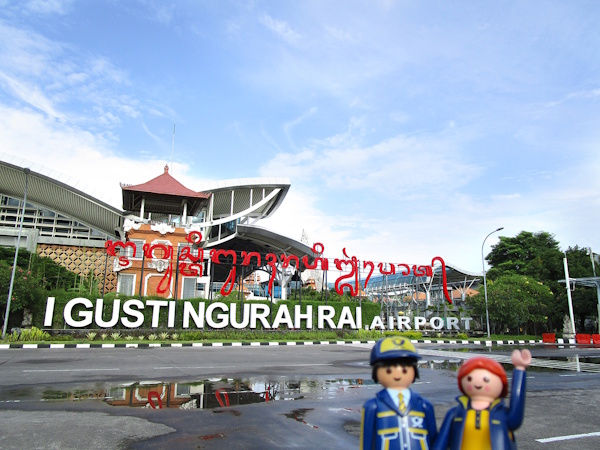
I Gusti Ngurah Rai is one of Indonesia’s National Heroes and the International Airport in Bali is named after him. The red writing above shows how it is written in the Balinese script, natively known as Aksara Bali and Hanacaraka. It is an abugida used in the island of Bali, commonly for writing the Austronesian Balinese language, Old Javanese, and the liturgical language Sanskrit.

In Bali we encountered many entrance gates like this, it is called Gapura Candi Bentar. It is decorated with Balinese style carving depicting the life of traditional Balinese people containing the symbol Rwa Bhineda, two things that always coexist such as yin & yang or good & bad sides of life to maintain the balance of nature, along with the Ang and Ah script inserted that means sky/father and earth/mother, so when these two put together it will form a life. It is formed by strong pillars that serve as a guardian and protector of its inhabitants. All together, it is hoped that anyone who passes through the Candi Bentar can have good thoughts, words and deeds when in the area of the house or building. Indirectly, this is also believed to be able to protect the occupants of the house from all kinds of evil intentions.
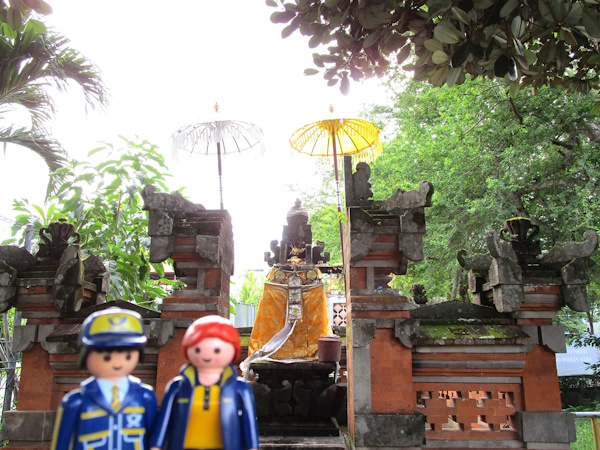
Balinese are very religious. There are also many small temples in Bali where the Hindu can come, pray and give offerings. This one is located in the International Airport Garden Area.

This huge, beautiful sculpture, called Satria Gatot Kaca (Gatot Kaca Knight), is located just in front of Bali’s Airport. It is made by famous sculture artist from Ubud – Bali, namely Wayan Winten in October 1993. The statue portrays a scene from the Mahabharata story, where the knight Gatot Kaca, the son of Bima, one of the five Pandavas (who is famous for his courage and bravery), is standing on top of Karna (Kaurava)'s famous many horse chariot, holding his famous Ganda Angkasa (sky club). This statue symbolises the courage and chivalry that will bring glory, and is believed to provide security and spiritual protection for travelers visiting Bali.
Bali is one of the 17,508 islands in Indonesia and the only Hindu-majority province in Muslim-majority Indonesia. Bali has a unique culture and customs, one you cannot find anywhere else in the world. Diversity is very much well accepted in Bali. You can sometimes see a church, mosque and pura (Balinese Temple) located harmoniously side by side.

It is very common in Bali that culture and religion infused together. One of the example is this magnificent architecture of Catholic Cathedral richly decorated in Balinese style. It can easily be mistaken as a Pura (Balinese Temple).
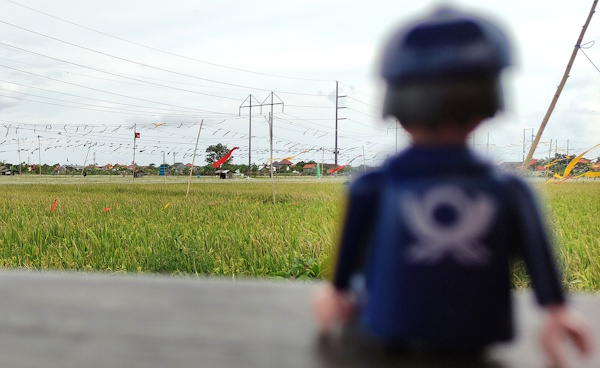
The weather when we were in Bali was just perfect, and we enjoyed taking a stroll through the rice paddies. While we were there, the rice was just ripening, so the farmers hung colourful cloths to scare away the wild birds to stop them from eating the rice.

Look at these beautiful sculptures of Balinese Man and Woman we encountered in front of a local’s house entrance, and the pretty front of this house. This complex style decoration can be found almost everywhere in Bali!
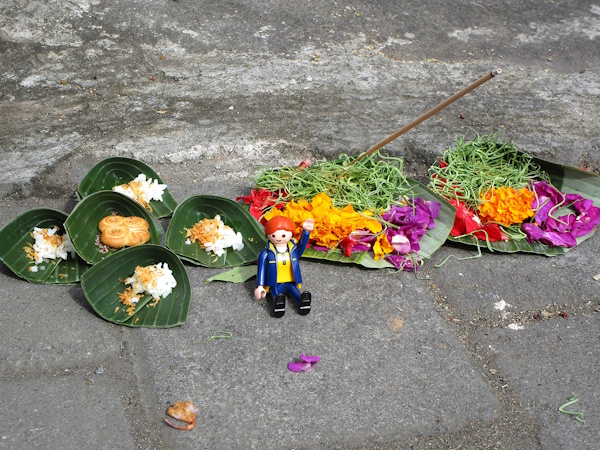
This is Sesajen, an offering given to the Gods as a way to say thank you for the blessing given. It is done daily by setting aside a small portion of food that they have on that day.

Bali is surrounded with many beautiful beaches, and the sunset is so beautiful that photo doesn’t do it justice…
During our trip to Bali, we arrived just in time to experience Nyepi. Nyepi is once in a year Day of Silence to commemorate every Saka New Year (Balinese Calendar). During Nyepi, the Balinese Hindu will be fasting, doing self reflection and meditating from 6 am in the morning until the 6 am the following morning. In these 24 hours, there are restrictions such as no lighting fires or lights, no working, no entertainment or pleasure, no travelling and for some no talking or eating at all.
3 or 4 days before Nyepi, the Balinese do “Melasti”. It is a ritual performed to cleanse the world from all the filth of sin and bad karma. It’s held on the edge of the beach with the aim to purify oneself of all the bad things in the past and throw it to the ocean. We were told that this ritual is done all over Bali beaches.

Months before Nyepi, the Balinese make Ogoh-ogoh. These are demonic statues made from bamboo, cloth or styrofoam, symbolizing negative elements or malevolent spirits or even characters from Hindu mytology. The night before Nyepi, the Ogoh-ogoh will be paraded around, then burned to vanquish the negative elements and create a balance with God, Mankind and Nature. Because of the pandemic, for a while the parades were not allowed, and they were simply displayed in front of community halls.
Especially the day before Nyepi, there are so many people stopping to take picture of the Ogoh-ogoh and creating slow traffic. We, of course, joined them for Ogoh-ogoh hunting. Above are some of the Ogoh-ogoh we managed to take picture of.
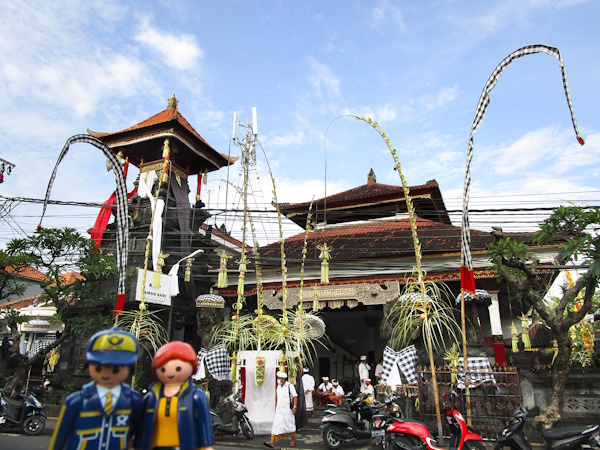
Balinese set up offerings in front of their houses, and decorate the Pura and streets with Penjor to celebrate Nyepi. We saw some Pura with many Balinese bustling in and out bringing offering and praying preparing for Nyepi!
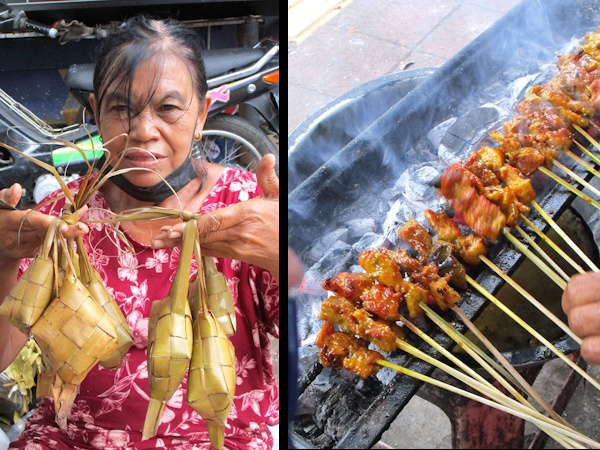
Near one of the Pura, we smelled something really amazing to eat, so good it made our stomachs rumble! Just next to the temple, there was a lady selling Sate Babi (grilled Pork Satay marinated richly in spices). The lady was very kind and friendly to us and proudly showed us the Tipat, steamed rice cake packed inside a diamond-shaped container of woven palm leaf pouch that are eaten along with the Sate Babi and Balinese Sambal (chilli sauce). Our host assured us we could find this yummy Sate Babi almost everywhere in Bali and not only during special events, although there are many more sellers when there is a ceremony. It tastes very yummy and a bit spicy, but we really enjoyed it.
On Nyepi Day, we woke up to a very peaceful quiet morning. It’s very quiet: we were having a hard time to find words on how to explain the sound of “total silence”. We could only hear the sound of the birds chirping and even the breeze through the leaves. There were no other noises, especially from vehicles or machinary, even human voices were kept to the minimum. We took a peek outside our host’s residence — the main road that was usually bustling with traffic was totally empty! And we noticed the air feels different, it was very fresh and cool. We guess it is very clean because there is zero pollution during that time. There were only few pecalang (local security) patrolling making sure all is well and to provide assistance if needed in case of emergency. We were told that today everything is closed, even the airport and harbor. Only the hospital is open, but you will need a special permit to go there since no one is allowed to go out.
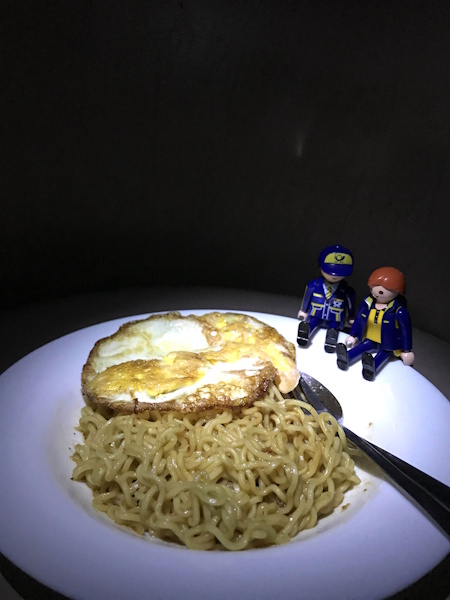
At night, we ate a simple easy meal — our host prepared us the famous Indonesian instant noodles, Indomie Goreng, yummy! It is listed as the best-tasting instant ramen 2019 by the Los Angeles Times, and it justified its title! Since we are not allowed to turn on the light, we ate under a small torch. It’s a unique fun experience.
After dinner, we went to the rooftop to see the sky. The view was breathtaking, the sky was a sea of bright stars since there was no light all around us. Despite it being cloudy at that time, we could still see many stars shining clearly, it’s like bilions of diamonds scattered throughout the sky. Our host told us had it not been cloudy, it would have been much more beautiful. Many tourists and famous photographers come to Bali just to experience and taking picture of the night sky during Nyepi.
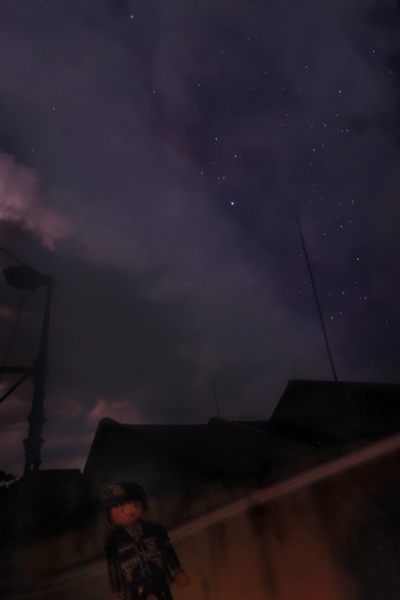
Before we left, of course we had to send some postcards. We visited the main Post Office in Denpasar and its Philately Counter.
On the way to the airport we stop by the Badjra Sandhi Monument which was located nearby the Post Office. This enormous monument was originally built in 1987. It is a symbol to preserve the spirit of the struggle of the Balinese people throughout the generation as well to maintain the integrity of the unitary state of the republic of Indonesia. It has 17 steps at the main door, 8 large pillars inside the monument building and the 45 meter height of the monument symbolizes the Independence Day of the Republic of Indonesia which is 17 August 1945.
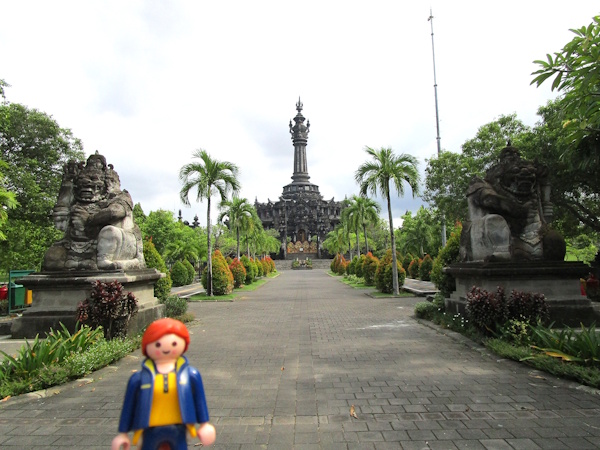
It contains 33 dioramas, which cover various incidents in the history of the Balinese, including the Balinese kingdom, the introduction of Hinduism, the Majapahit era, Dutch colonialism, and the struggle for independence.
Well, that sums up our short experience in Bali! We hope to visit again some other time to explore the many parts of Bali we didn’t get to see. Goodbye Bali, hope to see you again!

A big thank you to Vonny for being such a wonderful host and sharing with the community the magic of Bali! We’ll be dreaming of fragrant offerings, dazzling Ogoh-ogoh, and that breathtaking starlit sky for a long time to come.
With their passports in hand and postcards sent, the Little Mail Carriers are off to their next adventure — who knows where we’ll turn up next? See you soon! ✈️
























































